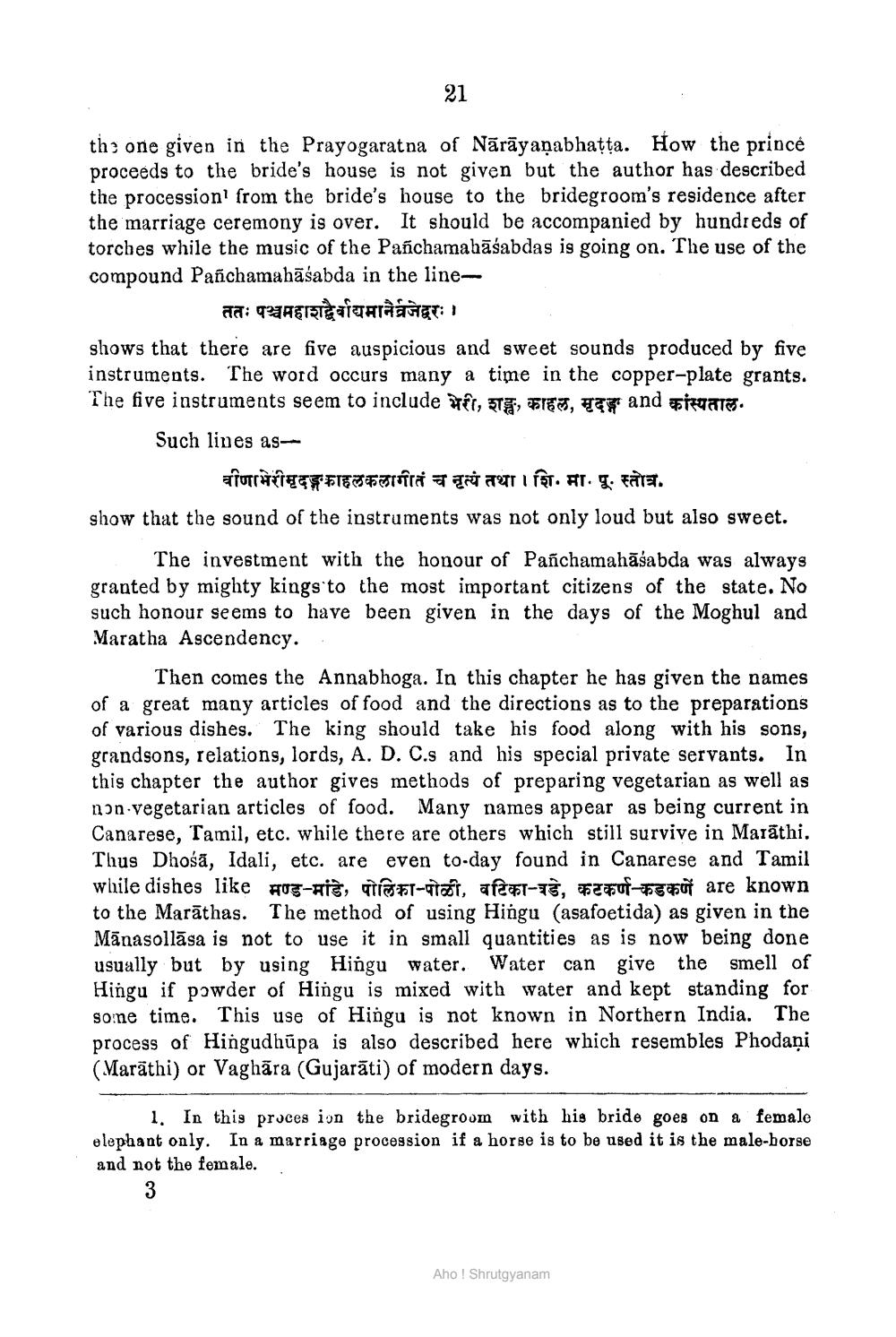________________
21
th; one given in the Prayogaratna of Nārāyaṇabhatta. How the prince proceeds to the bride's house is not given but the author has described the procession from the bride's house to the bridegroom's residence after the marriage ceremony is over. It should be accompanied by hundreds of torches while the music of the Panchamabāśabdas is going on. The use of the compound Panchamahāśabda in the line
ततः पञ्चमहाशद्वैर्वाद्यमानैर्ऋजेद्वरः । shows that there are five auspicious and sweet sounds produced by five instruments. The word occurs many a time in the copper-plate grants. The five instruments seem to include , T5, 5167, and straat.
Such lines as
वीणाभेरीमृदङ्गाकाहलकलागीतं च नृत्यं तथा। शि. मा. पू. स्तोत्र.
show that the sound of the instruments was not only loud but also sweet.
The investment with the honour of Panchamahāśabda was always granted by mighty kings to the most important citizens of the state. No such honour seems to have been given in the days of the Moghul and Maratha Ascendency..
Then comes the Annabhoga. In this chapter he has given the names of a great many articles of food and the directions as to the preparations of various dishes. The king should take his food along with his sons, grandsons, relations, lords, A. D. C.s and his special private servants. In this chapter the author gives methods of preparing vegetarian as well as nonvegetarian articles of food. Many names appear as being current in Canarese, Tamil, etc. while there are others which still survive in Marathi, Thus Dhośā, Idali, etc. are even to-day found in Canarese and Tamil while dishes like HOS-aig, gift-alat. af#r-TË, FT60f-45f0f are known to the Marāthas. The method of using Hingu (asafoetida) as given in the Mānasollāsa is not to use it in small quantities as is now being done usually but by using Hingu water. Water can give the smell of Hingu if powder of Hingu is mixed with water and kept standing for sone time. This use of Hingu is not known in Northern India. The process of Hingudhūpa is also described here which resembles Phodani (Marathi) or Vaghāra (Gujarāti) of modern days.
1. In this proces ion the bridegroom with his bride goes on a female elephant only. In a marriage procession if a horse is to be used it is the male-borse and not the female.
Aho ! Shrutgyanam




